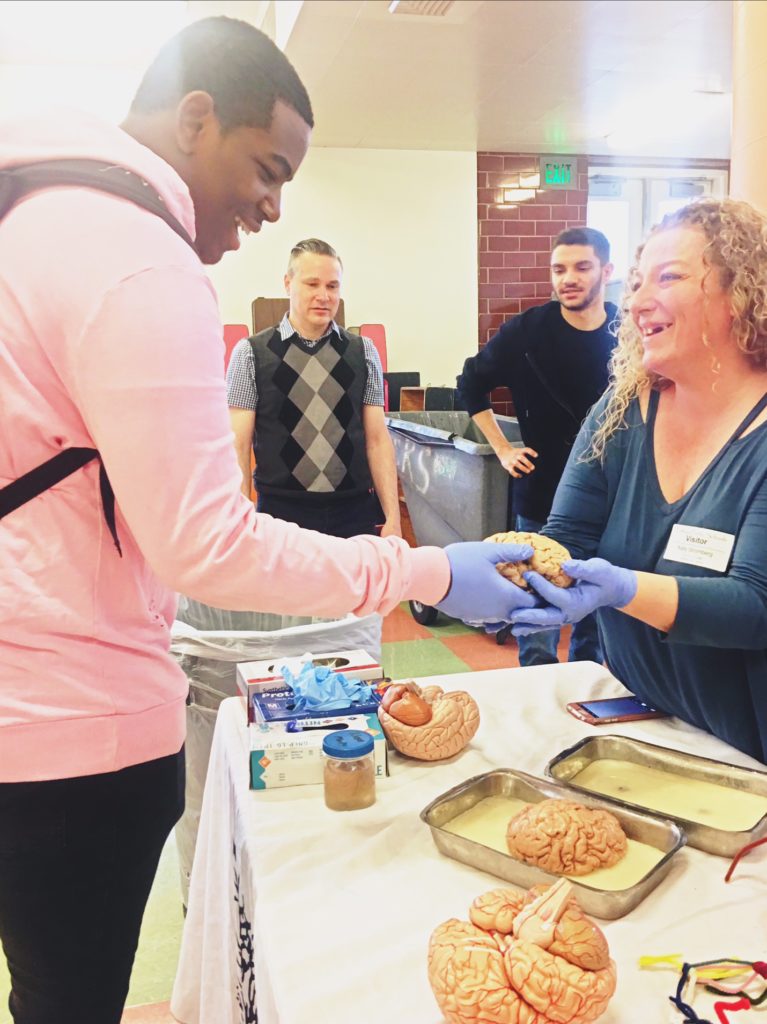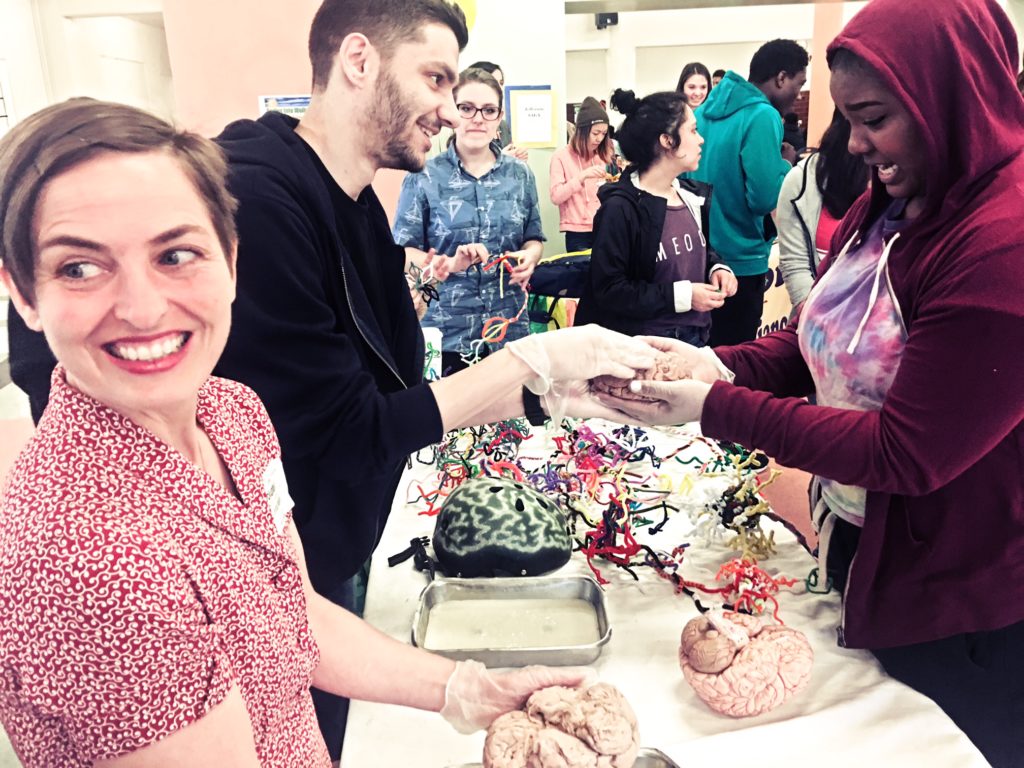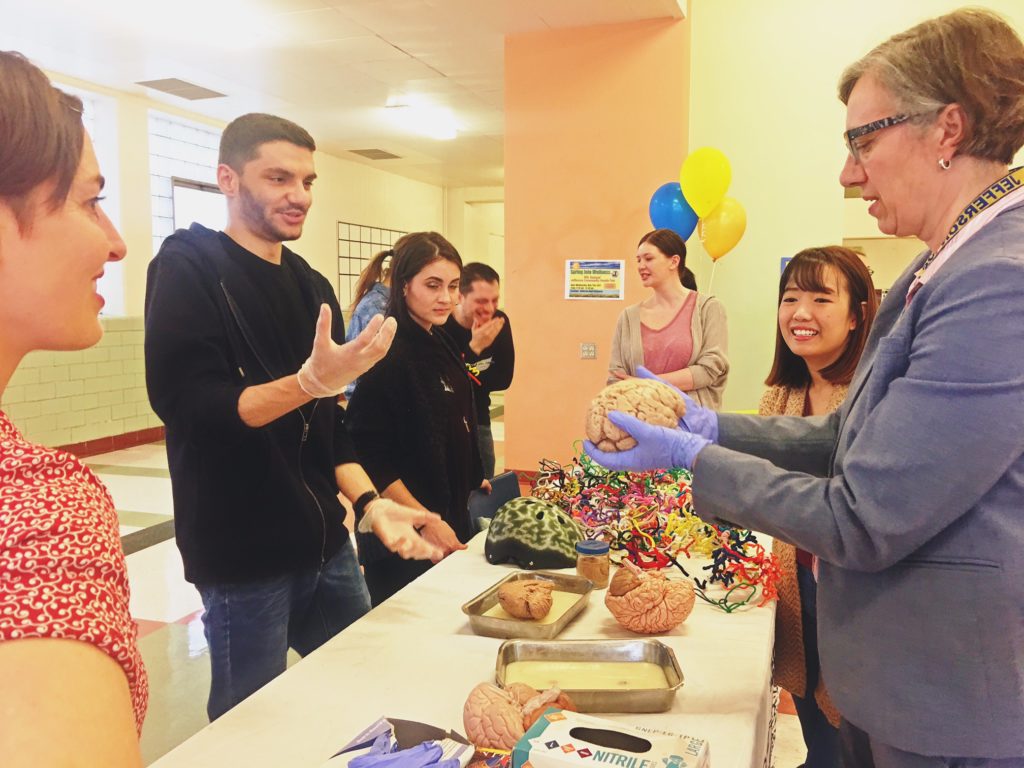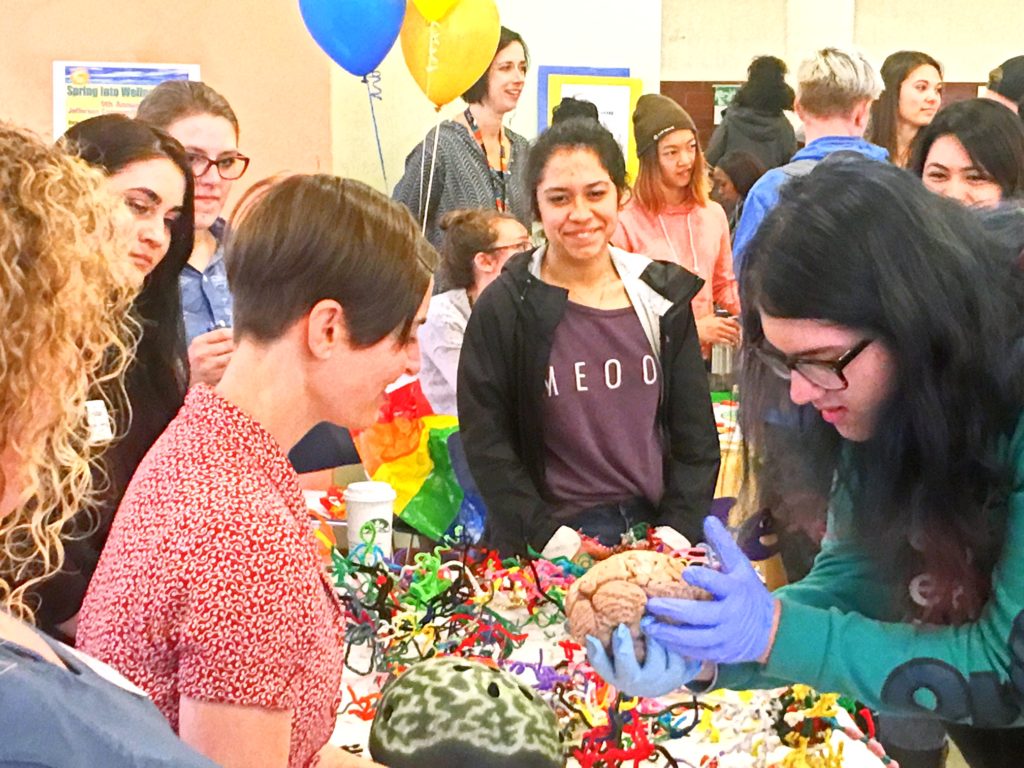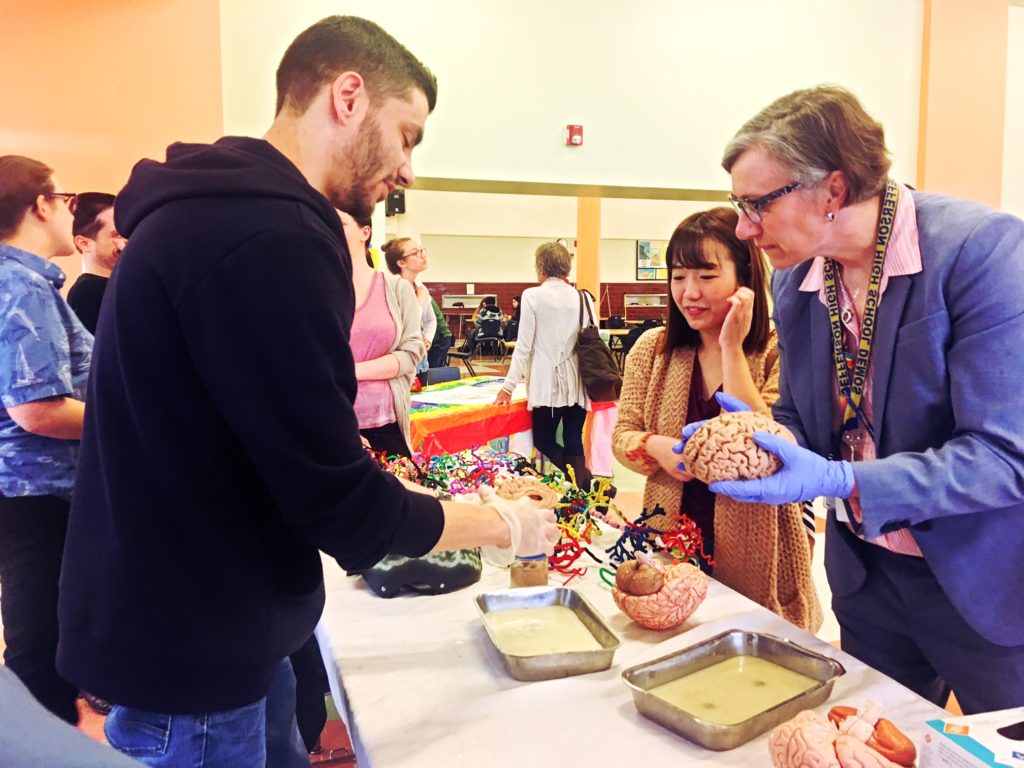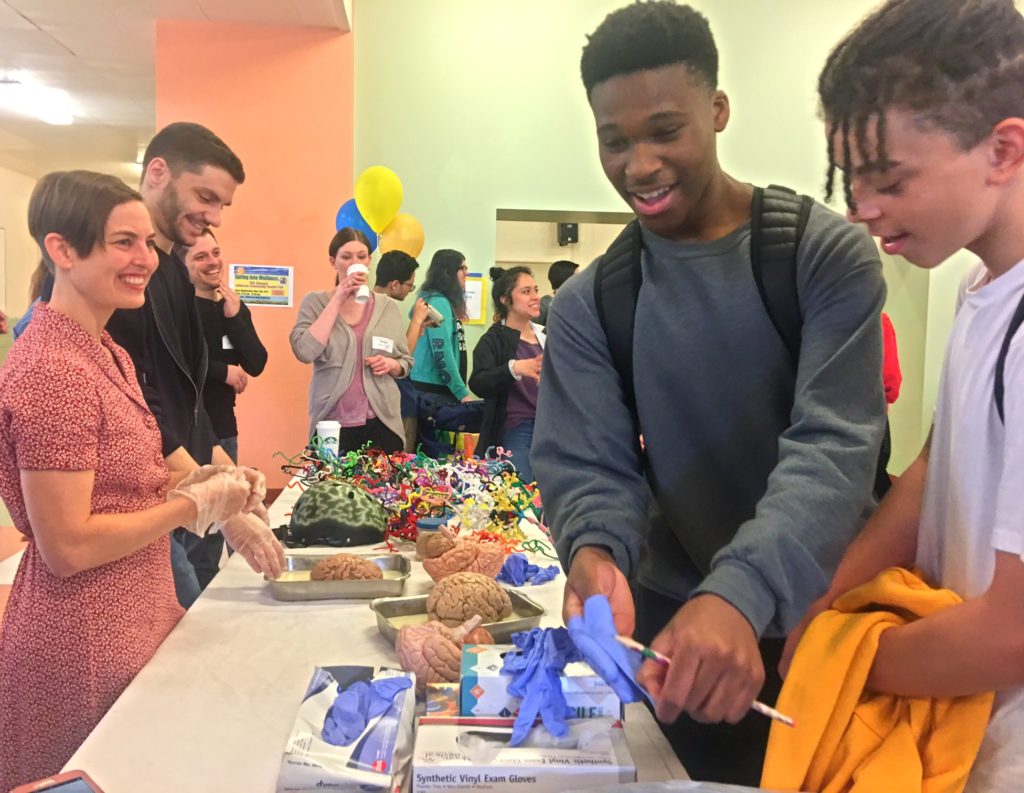“I know no safe depository of the ultimate powers of the society but the people themselves; and if we think them not enlightened enough to exercise their control…, the remedy is not to take it from them, but to inform…by education. This is the true corrective of abuses of constitutional power.” – Thomas Jefferson
The day after Portland voters agreed to spend millions to remove brain-damaging lead from school pipes, we joined PPS Nurse Lynn Zimmerman, a variety of health organizations, Bradley Angle House, New Seasons grocery, the student-run Sexuality and Gender Alliance (SAGA), the Yes! Program at OHSU – and a lunch time crowd of students for the annual Jefferson High School Health Fair…
LEARN MORE: Toxicity of lead: A review with recent updates
LEARN MORE: Molecular Mechanisms of Lead Neurotoxicity
LEARN MORE: Neurotoxic Effects and Biomarkers of Lead Exposure: A Review
We brought along another crowd of eager Noggin volunteers, including Aliese Poole, Kayla Townsley, Sulema Rodriguez, Krystal Nguyen, Jessica Patching-Bunch, Rebekah Hough, Michael Perna, Allana Zuccaro, Leota Wolford and Kelly Stromberg (a Jefferson grad!) from Psychology at Portland State University, and Mary Marigomen and recent graduate Joey Seuferling from WSU Vancouver…
We spent a busy hour in the cafeteria easily convincing students to set down their burritos and put on nitrile gloves instead. They held real brains and asked great questions about the extraordinary organ inside our skull…
“Does my own brain weigh the same? What are those tiny bumps on the bottom?” The bumps in question were the mammillary bodies, critical integrative “output” structures from a set of central nervous system (CNS) nuclei collectively known as the hypothalamus…
The hypothalamus acts to monitor our body’s internal environment, or “interior milieu” (first described by French physiologist Claude Bernard) – including temperature, salt balance, blood pH, chemical constituents of blood and cerebrospinal fluid (CSF) – and generates various forms of output, including the release of hormones (many from a gland known as the pituitary) and changes in heart rate and breathing (autonomic changes), to help maintain our body’s internal state.
LEARN MORE: Claude Bernard, The “Milieu Intérieur”, and Regulatory Physiology
LEARN MORE: Claude Bernard, the first systems biologist, and the future of physiology
The hypothalamus also signals these “drives” (e.g., thirst, hunger, warmth, sex) to neural networks in your cortex, so you will feel and respond consciously and socially to these bodily changes, and this hypothalamic output travels from neurons in the bumpy mammillary bodies to a nucleus in the thalamus, and from there to medial (middle) regions of your frontal lobes…
The mammillary bodies also receive significant neural input from other important brain structures, including the cortical hippocampus and a subcortical structure known as the amygdala, and appear to play a critical role in the integration of drives and memory…
LEARN MORE: The mammillary bodies and memory: more than a hippocampal relay
We thoroughly enjoyed talking with students, teachers, Lynn Zimmerman, the Jefferson principal, and representative from SAGA, Bradley Angle House and our good friend at Yes!…
Many thanks to Lynn for organizing another popular educational event!
From Lynn: “Hi Bill and Jeff – thank you so much for participating at the Jefferson High School Health Fair yesterday. The students love all the information, hands on brains, and fun interactive materials that you bring. Your enthusiasm for learning is inspiring!! Your group is wonderful and you do such great work! Thank you again for making the Jefferson High School Health Fair a huge success! Hope to see you again in May 2018!”







